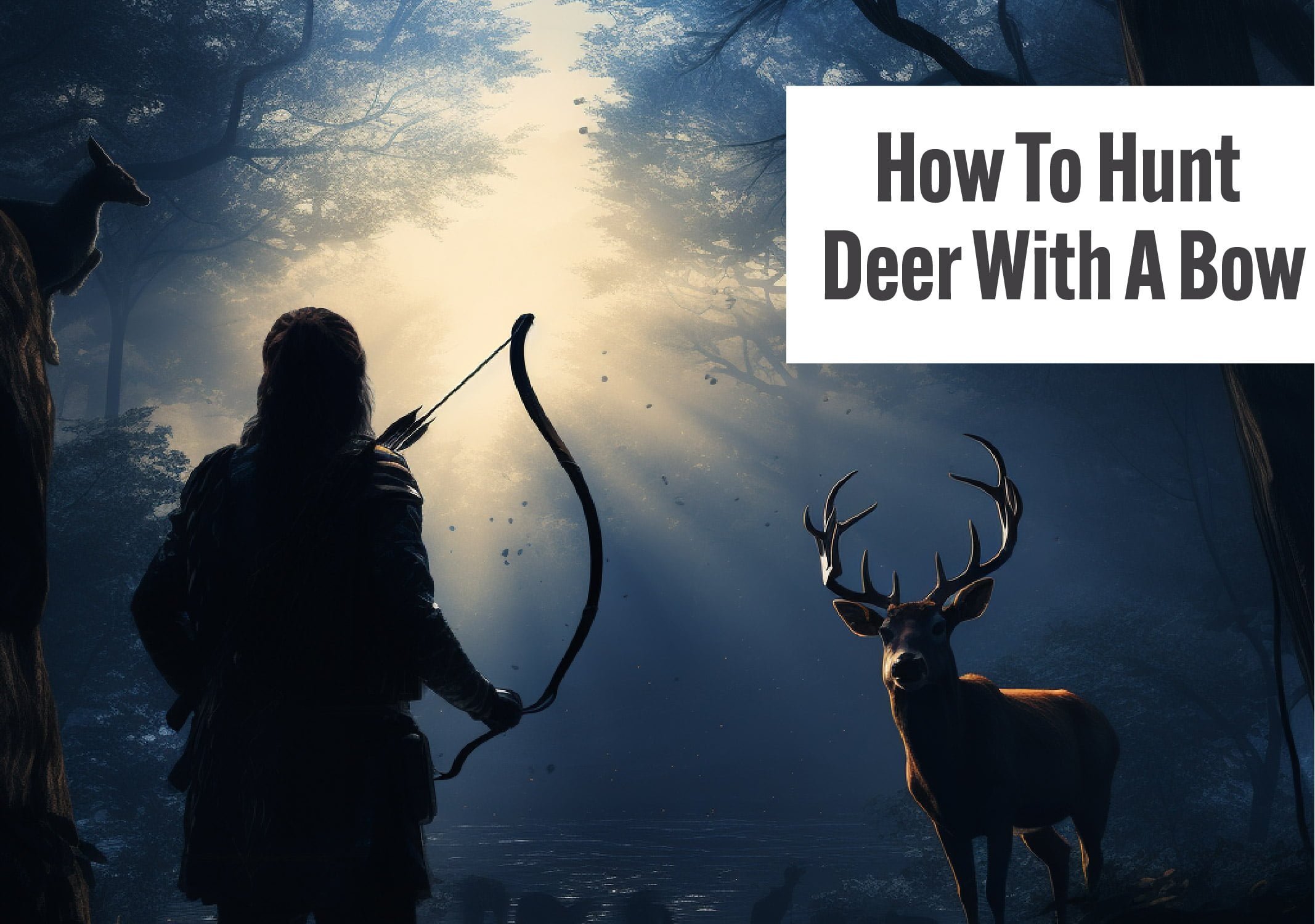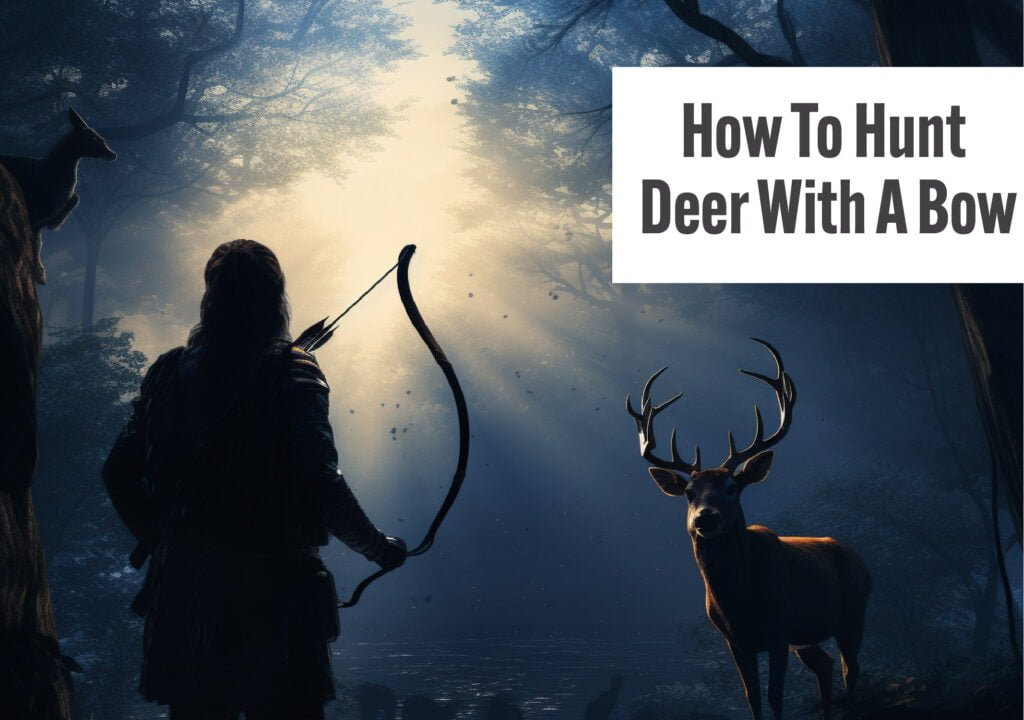Hunting Deer with a Bow: A Comprehensive Guide


Table of Contents
- Table of contents
- Introduction
- Choosing Your Bow
- Arrows and Broadheads
- Understanding Deer Biology and Behavior
- Scouting and Using Trail Cameras
- Developing Archery Skills
- The Art of Stalking and Concealment
- Selecting and Setting up Your Stand
- The Hunt and Shot Placement
- Tracking and Field Dressing
- Conclusion
- FAQs
Table of contents
Introduction
There is a primal and enriching sense of connection to the wilderness that comes with bow hunting, arguably unparalleled by other hunting methods. Deer hunting is especially popular among bowhunters, given the animal’s challenging nature and wide distribution. This guide provides an in-depth overview of hunting deer with a bow.
Choosing Your Bow
Selecting the right bow is a highly personalized decision that should take into account your strength, draw length, and comfort. The three main types of bows are compound bows, recurve bows, and longbows, each with unique characteristics.
Compound bows use a system of pulleys or cams to ease the draw weight when the bow is fully drawn, allowing for a steady aim. Recurve bows, on the other hand, lack these mechanical aids but are simpler and quicker to operate. Longbows, the traditional English weapon, provide a basic yet challenging option.
Arrows and Broadheads
The arrows should match your bow in terms of draw weight and draw length. Aluminum and carbon are popular choices for arrow material, with carbon being lighter and faster, but aluminum being sturdier.
Broadheads, the tips attached to the arrows, must be razor-sharp for a clean, quick kill. They come in three main types: fixed-blade, removable-blade, and mechanical or expandable broadheads. The choice between these should take into account your bow’s draw weight and your shooting distance.
Understanding Deer Biology and Behavior
Having a deep understanding of the deer’s biology and behavior significantly boosts your hunting success. Familiarize yourself with the feeding and bedding habits of deer, their preferred habitats, and the signs they leave behind.
A deer’s diet changes with the seasons, influencing its movement. Bedding areas, where deer rest and ruminate, can also provide clues about their schedule. Rubs and scrapes on trees, as well as droppings and tracks, can all signal a deer’s presence and movement patterns.
Scouting and Using Trail Cameras
Scouting your hunting area before the season begins is crucial for identifying deer routes, feeding areas, and bedding areas. It allows you to plan your hunting spot strategically and can significantly improve your success rate.
Trail cameras can be an incredibly useful tool for scouting, letting you monitor deer activity without continuously being present and possibly disturbing the area. Place them near potential feeding sites, trails, or watering holes to get a good idea of the deer’s habits.
Developing Archery Skills
The key to successful bow hunting lies in accurate shooting. Unlike hunting with a firearm, bow hunting requires getting within close range of the deer, typically less than 30 yards. This necessitates precise shooting skills.
Make sure to practice regularly and from different positions and angles. Familiarize yourself with your bow’s range and how to adjust your aim for different distances. The aim should be towards the heart or lungs, the vital organs for a quick, ethical kill.
The Art of Stalking and Concealment
A deer’s senses are highly acute. Therefore, the ability to stalk your target and stay concealed is crucial. This involves camouflaging your appearance and scent and minimizing any noise.
Camouflage clothing that matches the local terrain and vegetation can help you blend in. Masking your scent with scent eliminators or natural materials can prevent deer from detecting your presence. Lastly, move slowly and quietly, taking care to avoid stepping on dry leaves or breaking twigs.
Selecting and Setting up Your Stand
Using a tree stand or a ground blind can greatly enhance your concealment. Place it along a known deer path, preferably downwind to avoid your scent being carried towards the deer.
Whether you’re choosing a tree stand or a ground blind, it should offer a clear line of sight, easy shooting lanes, and be comfortable enough for extended periods of waiting.
The Hunt and Shot Placement
Patience and quietness are virtues in bow hunting. It may take hours of waiting before a deer comes into range. Staying still and silent during this time is crucial.
When a deer is finally in range, draw your bow smoothly and aim carefully. Make sure you’re confident in the shot before releasing the arrow, aiming for the heart or lungs for an ethical kill.
Tracking and Field Dressing
After the shot, it’s important not to rush after the deer immediately. Give it some time to bleed out and expire, then follow the blood trail to locate it.
Knowing how to field dress the deer is essential for preserving the meat. This involves removing the internal organs on site. Remember to bring a sharp hunting knife and wear gloves for this task.
Conclusion
Mastering deer hunting with a bow is a rewarding pursuit that combines skill, patience, and a profound respect for nature. It requires meticulous preparation and practice but offers an unrivaled sense of accomplishment and connection with the wilderness.
FAQs
1. Is there a specific time of year best for bow hunting deer?
Deer hunting seasons vary by location and species, but many bowhunters prefer hunting during the rut, or deer breeding season. During this time, deer are more active and males are less cautious, often leading to more opportunities for a successful hunt.
2. What is the best type of broadhead for bow hunting deer?
The choice of broadhead depends largely on personal preference and the specifics of the hunt. Fixed-blade broadheads offer reliability and simplicity, while mechanical broadheads provide larger wound channels, increasing the chances of a quick kill.
3. Can I practice archery in my backyard?
Laws regarding backyard archery vary, so it’s best to check local regulations. If it’s legal and you have a safe backdrop and enough space, practicing in your backyard can be a convenient way to improve your skills.
4. How can I ensure a humane kill when hunting deer?
Achieving a humane kill involves accurate shot placement aiming for the deer’s vital organs (heart or lungs), as well as using sharp, high-quality broadheads. It’s also important to only take shots you are confident in to avoid unnecessary suffering.







